Organ-on-Chip

Projects and initiatives
HealthIn vitroOrgan-on-Chip
NXTGEN Hightech Biomed
The Netherlands has strong academic knowledge in areas like Lab-on-Chip, Organ-on-Chip, artificial organs, and cell production technology. However, turning this knowledge into actual products is challenging due to the need for collaboration between different technological and biological specialists. The NXTGEN Hightech program (https://nxtgenhightech.nl/en/biomed/) addresses this by creating a collaborative environment where companies from various fields work together. This approach aims to transform academic insights into innovative products, benefiting both the industry and society.
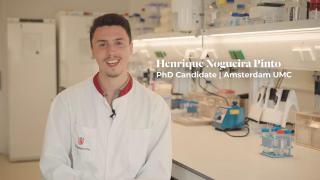
Innovation examples
HealthIn vitroOrgan-on-Chip
An iPSC-derived blood-brain barrier to model neurodegeneration
The blood-brain barrier is a layer of cells that protects our brain from harmful compounds. However, due to this tight barrier, many drugs to treat neurological diseases cannot enter the brain either.
There are currently no good models to test these types of drugs. Henrique Nogueira Pinto is a PhD candidate at the Vrije Universiteit in Amsterdam. He is developing a blood-brain barrier model coupled to mini-brains. With this model, he aims to more reliably test how drugs can be transported over the blood-brain barrier and what their effect on the brain is.
Click on the info button for the full version of the video. Click here (https://fluidsbarrierscns.biomedcentral.com/articles/10.1186/s12987-022-00316-0#Sec3) for a review of the current status of in vitro models for the blood-brain barrier.
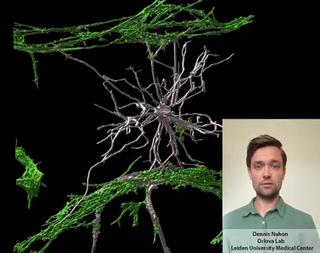
Innovation examples
HealthIn vitroOrgan-on-Chip
Stem cell derived Vessels-on-Chip to study brain disorders
Dennis Nahon is a PhD candidate in the Department of Anatomy and Embryology at the Leiden University Medical Center. In his research, under supervision of Dr. Valeria Orlova (https://www.orlovalab.com/) and Prof. Dr. Christine Mummery, he aims to mimic a blood vessel in the brain by combining different stem cell derived cell types, in a 3D Vessel-on-Chip model. Here, an example of these in vitro blood vessels is shown in which certain brain cells known as astrocytes (in white) interact with the blood vessels (in red). This model paves the way for investigating brain vessels outside the human body, while reducing the need for animal models.
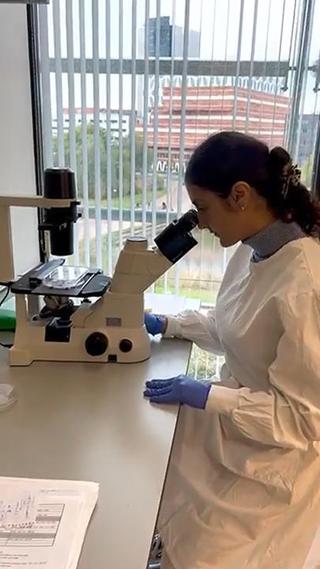
Innovation examples
In vitroOrgan-on-Chip
From 2D hiPSC culture to developing a 3D vessel-on-chip
Theano Tsikari is a 2nd year PhD student at the Orlova group at LUMC. As part of the LymphChip consortium, her project focuses on the development of immunocompetent organ-on-chip models of the cardiovascular system, and especially the integration of tissue-resident macrophages and lymphatic vasculature using human induced pluripotent stem cells. In this video, you can follow her as she presents you the backbone of her project, a 3D hiPSC-derived vessel-on-chip model, that has been previously developed in the Orlova group and can be employed for the generation of advanced in vitro models of vascular diseases.

Innovation examples
In vitroOrgan-on-Chip
Unified organoid system for modeling heart and kidney interaction on-a-chip
Beatrice Gabbin is a PhD candidate at the Anatomy and Embryology Department of the Leiden University Medical Center. Her project is shared with the Nephrology Department and focusses on the study of the cardiorenal axis in vitro. Both heart and kidneys have vital functions in the human body and reciprocally influence each other’s behavior: pathological changes in one can damage the other. There are already multiple independent in vitro (human) models of heart and kidney, but none have so far captured their dynamic crosstalk. The aim of the project is therefore to develop a microfluidic system which can be used to study heart and kidney interaction in vitro. For this purpose, cardiac microtissues and kidney organoids derived from human induced pluripotent stem cells are generated and loaded onto a 3D perfusion chip for their dynamic co-culture. This system enables the study the cardiac and kidney interaction with a high level of control. The validation of a unified organoid system will enable the investigation of diseases involving the two organs and their potential treatments. Read more via the link in the video and https://doi.org/10.1016/j.mtbio.2023.100818.

Innovation examples
HealthIn vitroOrgan-on-Chip
Modelling COVID-19-induced thrombosis using blood-perfused Vessels-on-Chips
A subset of hospitalized COVID-19 patients develops severe symptoms like microthrombosis and multiple organ-failure, worsening survival rates. The most inner layer of cells of a blood vessel, the endothelial cells, play a central role in the development of these complications. Their dysfunction can be replicated in advanced cell culture models like our blood-perfused Vessel-on-Chip to further understand disease mechanisms. In this short highlight, Huub Weener from the University of Twente shows how the technique works and what these models contribute to our knowledge of COVID-19.
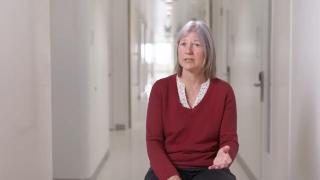
Innovation examples
HealthIn vitroOrgan-on-Chip
Using skin and mucosa models to replace animal testing
The skin and mucosa are important tissues that differ between species in health and disease. The group of Sue Gibbs works on the development of advanced in vitro models that mimic these two tissues, specialising in immunity models and organ-on-a-chip technologies. They use skin models to study for example melanoma, skin allergies, eczema, burns and healing wounds. Dental models are used for the safety of materials used in dentistry, for example to test the quality of the implant and false tooth when it comes to attaching to the soft tissue. Their ambition is to expand into the field of multi-organ technology to make even more relevant models for the human skin and mucosa.
Click on the link in the video to watch more or read the interview with Sue he[https://vu.nl/en/research/more-about/using-skin-and-mucosa-models-to-replace-animal-testing]re.
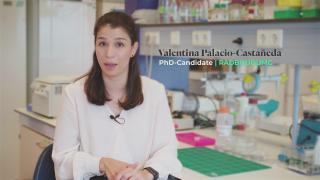
Innovation examples
HealthIn vitroOrgan-on-Chip
Tumor-on-chips to study delivery of protein therapeutics
Valentina is a PhD candidate at the Department of Biochemistry at Radboudumc. Her research focuses on developing and applying organ-on-chip technologies, such as tumor-on-a-chip systems, to study the tissue-specific and cytosolic delivery of protein therapeutics. Valentina's research has also aimed at bridging the gap between engineers and biologists, promoting the use of microfluidic organ-on-chip technologies to answer more relevant biological questions. One example of this is the development of a mathematical model that could be applied to study drug delivery and diffusion in a tumor-on-a-chip system and to extrapolate possible outcomes of the delivery of therapeutic proteins to tumors in the human body. Another collaboration led to the development of a tumor-on-a-chip where hypoxic conditions can be replicated and investigated, and where the targeting of specific hypoxia markers in tumor cells can be investigated.
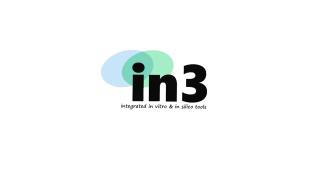
Projects and initiatives
HealthToxicologyIn vitroIn silicoOrgan-on-Chip
In3: combining in vitro and in silico for chemical safety assessment
The in3 project aims to drive the synergistic development and utilisation of in vitro and in silico tools for human chemical and nanomaterial safety assessment. The project focused on differentiation of human induced pluripotent stem cells to toxicologically relevant target tissues including; brain, lung, liver and kidney. The tissues, from the same genetic backgrounds, were exposed to common compounds and the data generated and prediction tools generated were used to develop modernised safety assessment approaches combining cheminformatics, mechanistic toxicology and biokinetics into computational models which can account for donor and tissue specific effects.
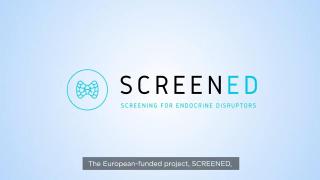
Projects and initiatives
HealthIn vitroOrgan-on-Chip
SCREENED: developing 3D thyroid models
The European collaborative project SCREENED aims to develop three-dimensional (3D) cell-based in vitro tests to better characterize the effects of endocrine disruptors (EDs) on thyroid gland function. This method will overcome the limitations of existing tests, being more sensitive at low doses of exposure to chemicals, and enabling the prediction of their toxicity on human health in a sex-specific manner. The ambition of the SCREENED project is that these new 3D in vitro tests, as well as the increased knowledge about adverse reactions after exposure to EDs, will be used for regulatory purposes, ultimately to improve human health.
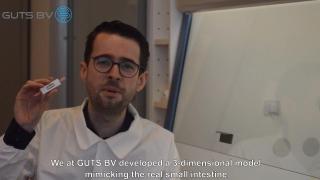
Innovation examples
HealthToxicologyIn vitroOrgan-on-Chip
GUTS BV - small intestine-on-a-chip and advanced computational analysis for compound and protein screening
GUTS BV is a contract research organization offering its 3-dimensional state-of-the-art small intestinal in vitro model in combination with custom computational analysis approaches. The small intestinal model was developed during Dr. Paul Jochems PhD research at Utrecht University in the group of Prof. Roos Masereeuw. In comparison to the current gold standard (Transwell model), they show improvement in cell differentiation (all major specialized cell types present), physiological structure (3D tube- and villi-like structures) and a functional epithelial barrier. After acquiring experimental data from this model computational analysis approaches are used to score and compare measured compounds for all tested biological parameters at once. The combined effort of improved in vitro modelling and data analysis is believed to result in an enhanced preclinical predictability.
GUTS BV was nominated for the Venture Challenge 2021 for their development of an intestinal model combined with advanced computational analysis for protein and chemical compound screening.
Research papers:
https://www.sciencedirect.com/science/article/pii/S0887233318307811
https://www.mdpi.com/2072-6643/12/9/2782/htm
https://www.nature.com/articles/s41538-020-00082-z
LinkedIn: https://www.linkedin.com/company/71016128/
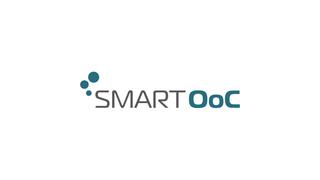
Projects and initiatives
In vitroOrgan-on-Chip
SMART OoC platform: a standardized modular approach
The SMART Organ-on-Chip project aims to bring Organ-on-Chip technology to the next level, out of the pioneering labs to industrial applications. NWO awarded 4.8 million euro to a large and diverse consortium of universities, companies, research institutes and foundations, brought together by hDMT (Dutch Organ-on-Chip Consortium), that will together develop standardized Organ-on-Chip models. These models will be made to fit the scale and quality that pharmaceutical companies need to use them for development of novel drugs, with better science and less animal use as a result. The project will kick off in autumn 2021. More information on the project will follow in the course of 2021.